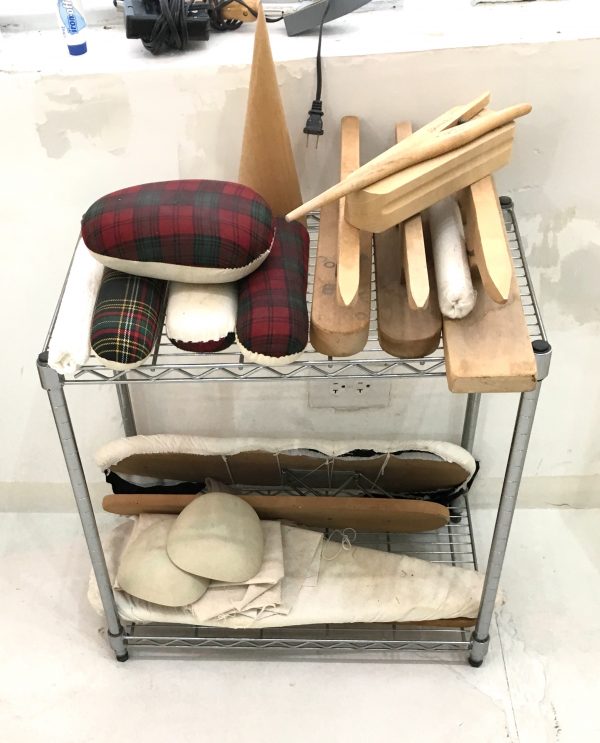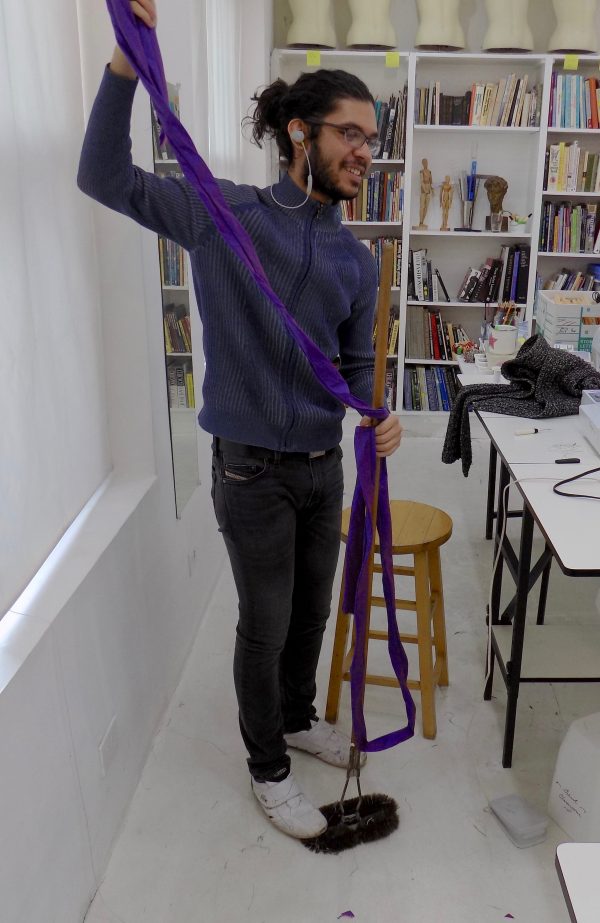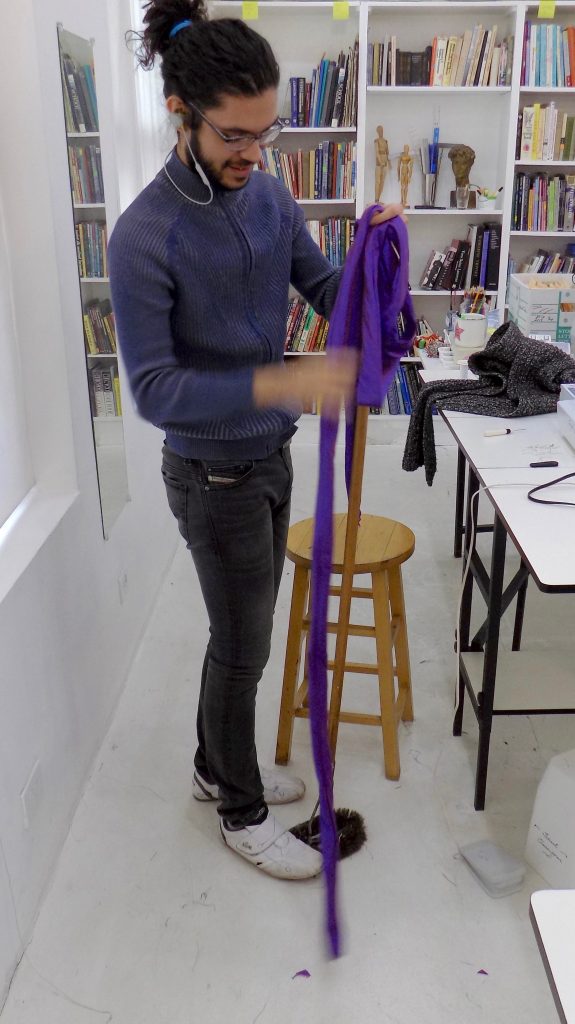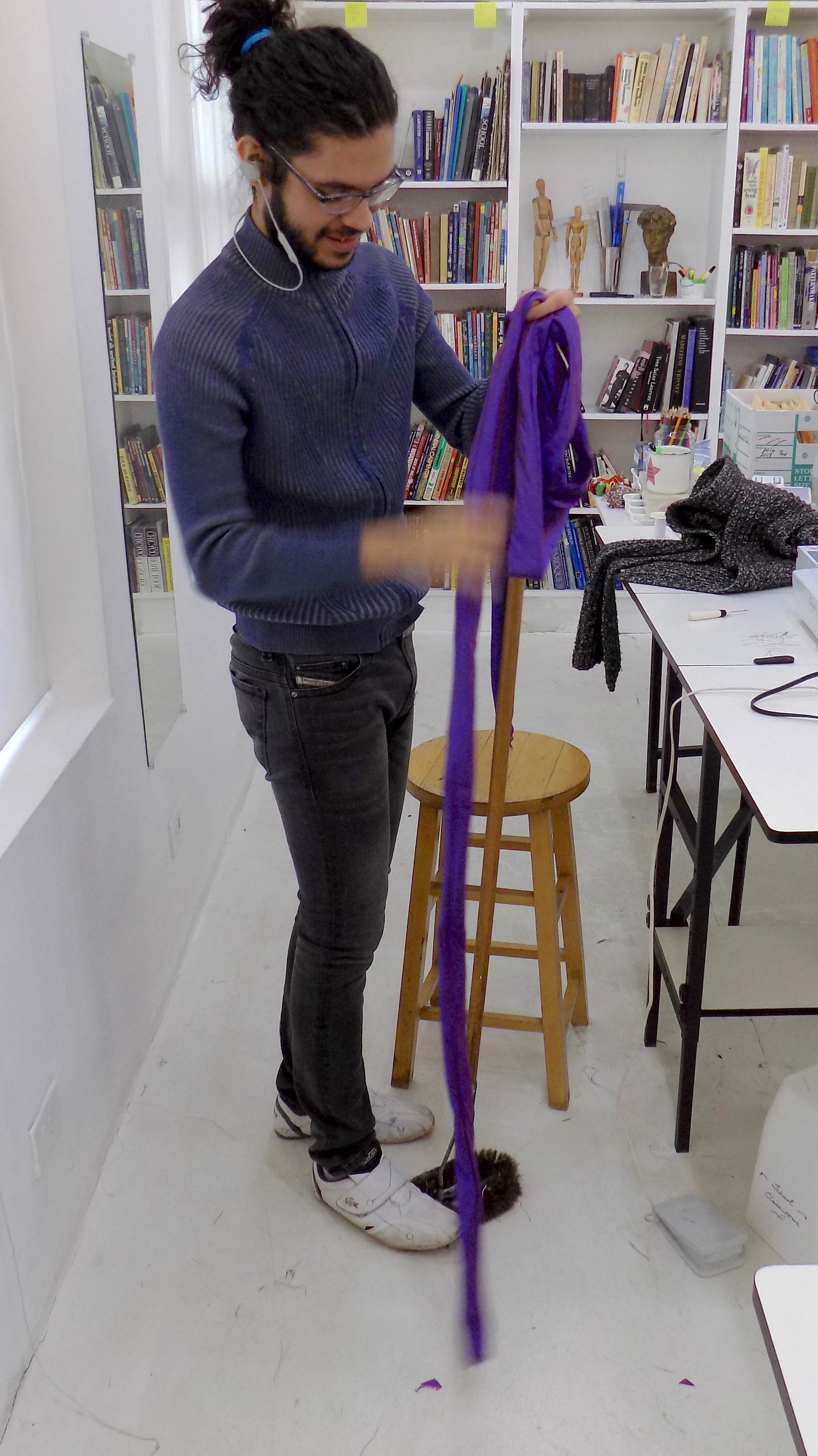As folks work through their projects up here, we eventually end up having a conversation about tools and their use.
As a sewing and design workroom, we’ve built up a store of pressing and turning tools over the years – you will too once you’ve done this kind of thing for almost two decades.

And yet, there will still be times when you need something close to what you have, but very definitely not what you have on hand. If you aren’t willing to think outside the box and embrace your place as a member of a tool-using species, you just may end up making more work for yourself than you need to.
This is especially important for beginners and intermediate sewers who are being marketed to and at for every conceivable notion under the sun. Stop and think for a second before you run off to Jo-Ann’s, even if you have a coupon.
Nathan was recently working on a 4 yard long silk belt that had been sewn as a tube for his latest project/diversion. We’ve got the standard turning tools that you can find in sewing rooms, studios, and workrooms across the land, but they weren’t quite right for this. They were either too short, too fussy, or just wrong.

So, thinking outside the box, we ran to the office, got the dust-mop, and repurposed the handle as a turner. Don’t discount the things around you when you are problem solving on a project. We could have turned this with one of the tools we linked above with a little more fuss, but using the raw wood handle we got a fast, efficient turning that saved a lot of fumbling with hooks, tubes, and bodkins.

We aren’t saying “use leftover bananas that have turned to mark your fabric!” or “repurpose your used dental floss as thread!” here, but thinking around what you need can be a great way to pinpoint exactly what you need.
